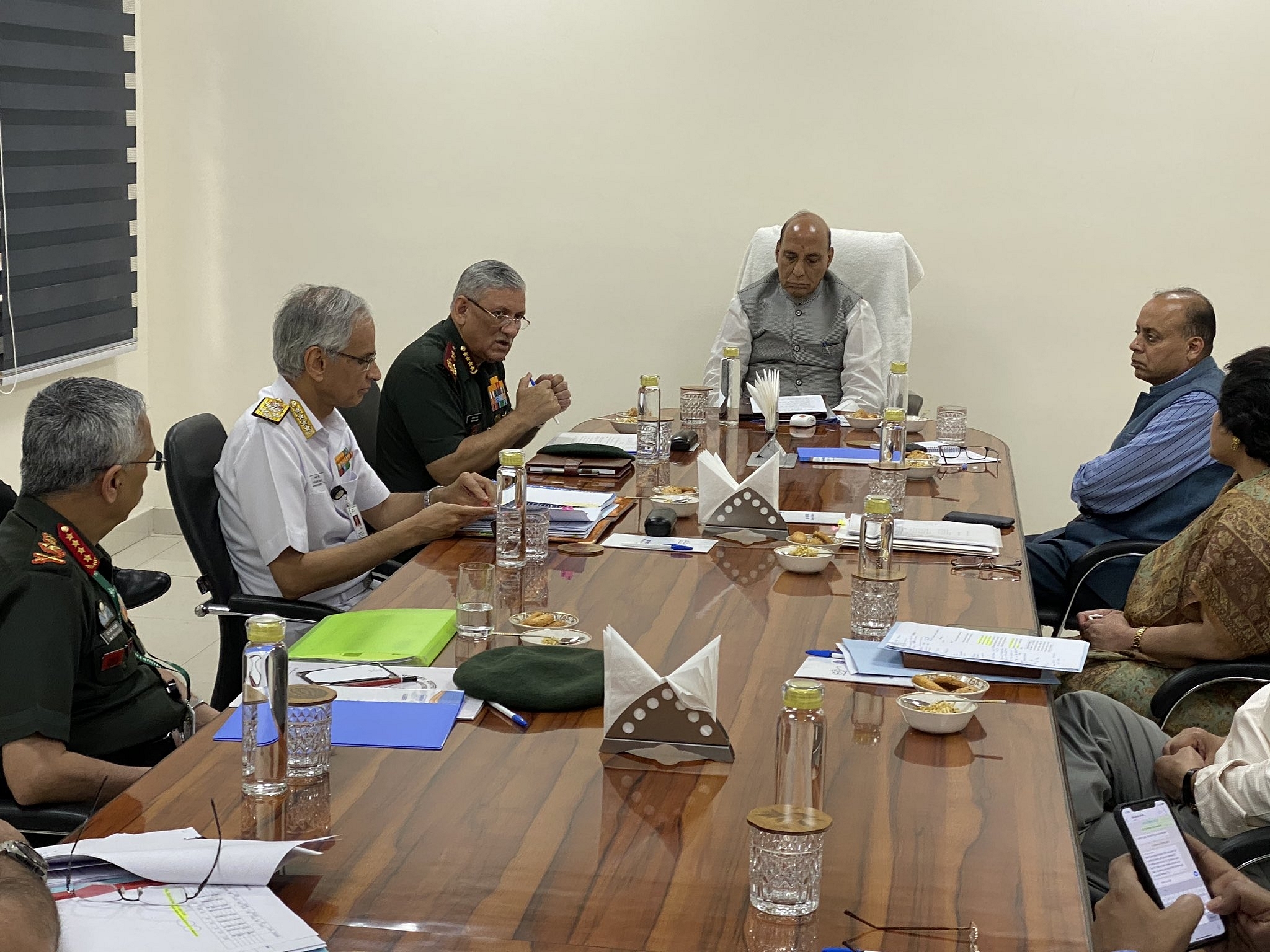Insta
Military Reorganisation Gathers Pace: India To Have Five Theatre Commands With Defined Areas Of Operations By 2022

Defence Minister Rajnath Singh in a review meeting with CDS General Bipin Rawat and others (representative image) (Pic via Twitter)
In a significant reform of the defence architecture, the Indian military is set to be reorganised into five theatre commands by 2022, each having defined areas of operations and seamless command structure for synchronised operations, reports Hindustan Times.
India’s Chief of Defence Staff (CDS) Gen Bipin Rawat has been empowered by the government to create the theatre commands and the task has already begun with a China-specific Northern Command and a Pakistan specific Western Command which are under serious consideration. These theatres commands will be like the ones US and China currently have.
The Western Command’s remit is likely to be from Indira Col on Saltoro Ridge in the Siachen Glacier region to the tip of Gujarat with its headquarters likely in Rajasthan's Jaipur. Meanwhile, the Northern Command’s remit will likely begin from the Karakoram Pass in Ladakh and continue up to the last outpost Kibithu in Arunachal Pradesh. Its headquarters could be established in Uttar Pradesh's Lucknow.
Apart from these two, the third theatre command will be the Peninsular Command likely to be headquartered at Kerala's Thiruvananthapuram; the fourth, a full-fledged Air Defence Command; and the fifth, a Maritime Command.
The Maritime Command could also possibly include the tri-service Andaman and Nicobar Islands Command. If it materialises, the CDS will likely have the Armed Forces Special Operation Division, Cyber Command and the Defence Intelligence Agency under him with manpower drawn from all the three services.
Support Swarajya's 50 Ground Reports Project & Sponsor A Story
Every general election Swarajya does a 50 ground reports project.
Aimed only at serious readers and those who appreciate the nuances of political undercurrents, the project provides a sense of India's electoral landscape. As you know, these reports are produced after considerable investment of travel, time and effort on the ground.
This time too we've kicked off the project in style and have covered over 30 constituencies already. If you're someone who appreciates such work and have enjoyed our coverage please consider sponsoring a ground report for just Rs 2999 to Rs 19,999 - it goes a long way in helping us produce more quality reportage.
You can also back this project by becoming a subscriber for as little as Rs 999 - so do click on this links and choose a plan that suits you and back us.
Click below to contribute.
Latest